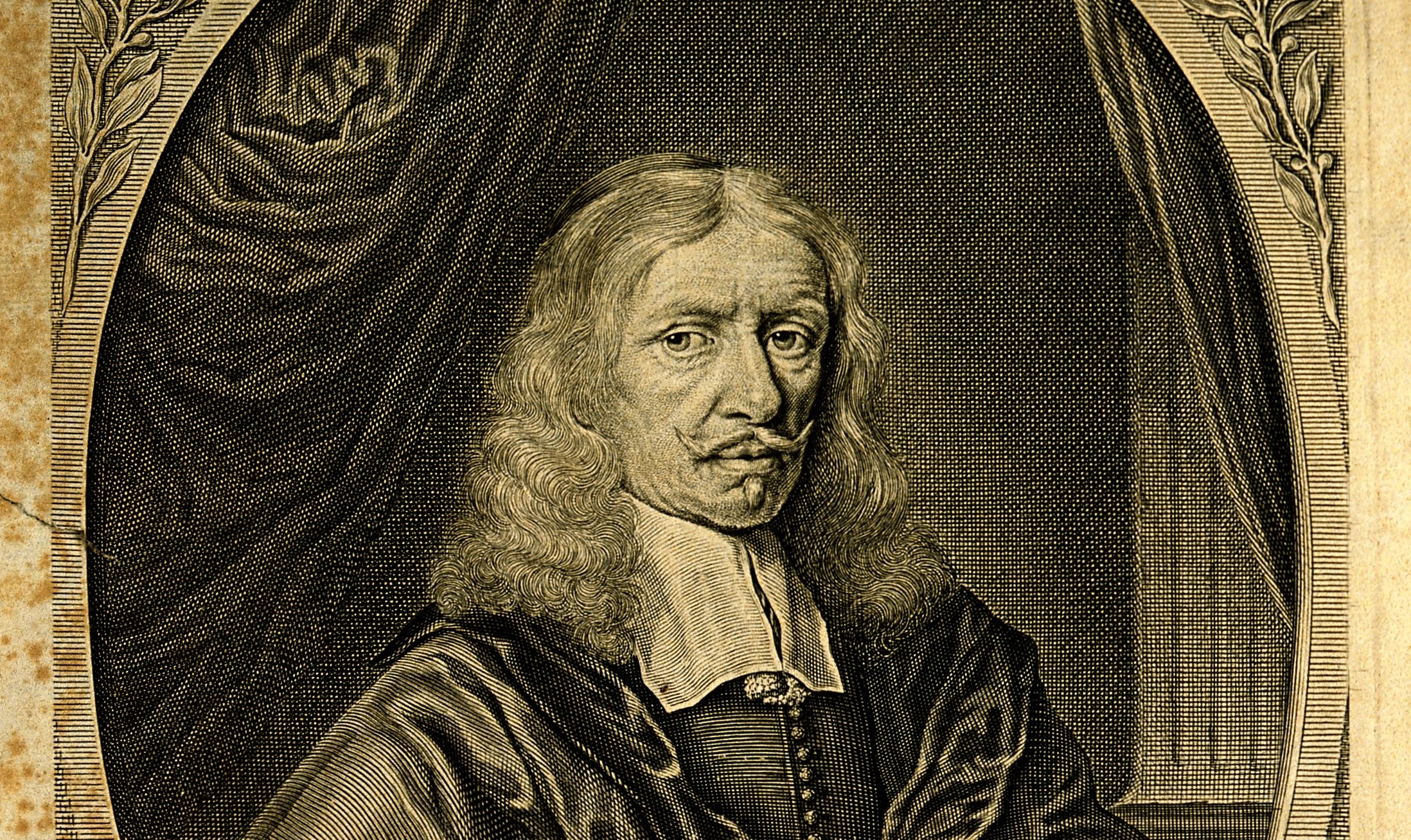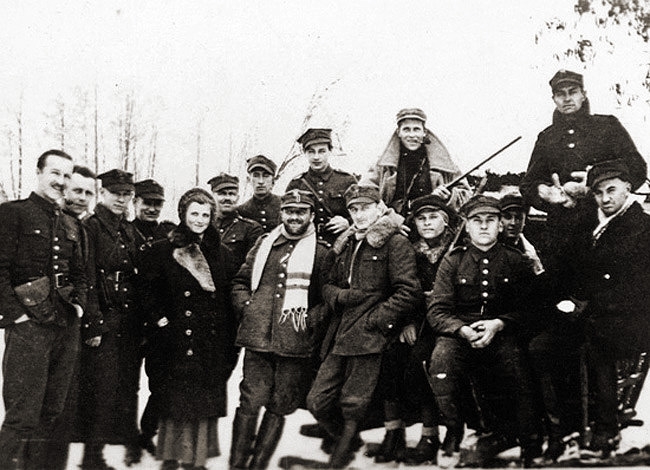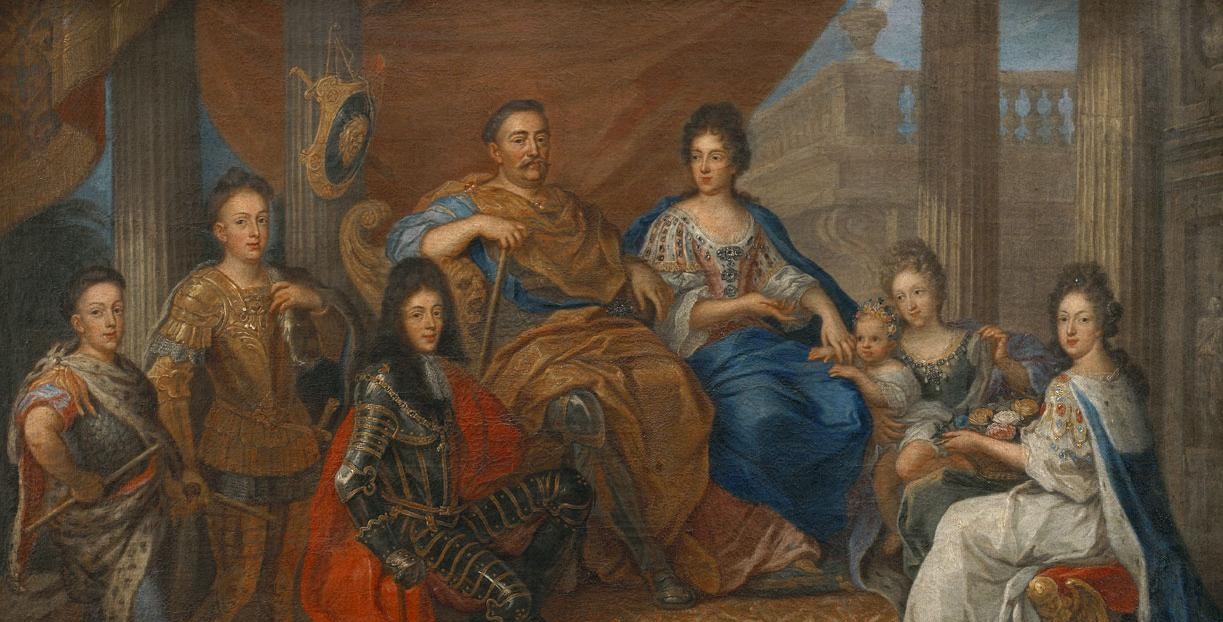He was a Gdańsk patrician and councillor who, thanks to his income from beer production, was able to conduct groundbreaking observations of space. He was one of the most eminent astronomers of 17th-century Europe and the creator of scientific knowledge of the Moon.
by Jan Hlebowicz
Johannes Hevelius (1611–1687) was born and grew up in Gdańsk, which occupied a completely unique position on the map of the Polish-Lithuanian Commonwealth. ‘The richest and most prosperous urban centre distanced itself from other much weaker Polish cities in terms of economic and commercial potential, while simultaneously being a prime focus of intellectual and artistic life,’ wrote Professor Karolina Targosz. It was there that young Johannes grew up, whose wealthy father guaranteed him a comprehensive education. First, there was the Academic Middle School, then the university in Königsberg, and then again studies in the city on the Motława River. He was introduced to arithmetic, geometry, trigonometry and, above all, astronomy, by Peter Crüger, one of Gdańsk’s greatest mathematicians and a renowned astronomer. It was thanks to this scientist that the young Johannes also learnt to build mathematical instruments on his own, which, as it proved in the future, became crucial for his astronomical career. Hevelius studied law and economics in Leiden. Over subsequent years he undertook a scientific tour of England and France. Pastor Andreas Barth in his memoirs emphasised that the young Johannes ‘made a journey not only to examine from the outside great foreign cities and palaces, but to get to know from the inside the urban facilities, customs, and peoples, to learn languages’. During his scientific voyage Hevelius also met many scholars with whom he later maintained lively correspondence.
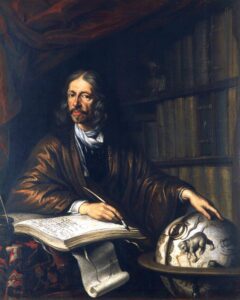
The stars and Jopen beer
After returning from abroad, he married and slowly began to take over his father’s business. Following the principle that ‘it is better to become a good citizen with something than a naked and poor mathematician’, he took over the family breweries. He brewed, among other things, the famous Gdańsk speciality – Jopen beer, which is a type of thick, nutritious beer syrup. It was added to inferior beers in an attempt to improve their flavour. Sometimes it was also used as a medicine to induce strong sweats. Although some considered it undrinkable, even then it was used in the kitchen to flavour sauces and soups. Hevelius found a market for his beer in many European and Arabic countries. This in turn translated into considerable profits. He was assisted in managing the business by his first wife, Katharine Rebeschke. Hevelius was also active in the brewers’ guild and the city council. At the age of forty, he became a lifelong councillor of Gdańsk. At one point, the Gdańsk City Council issued an edict banning the sale of certain types of beer and regulating the prices of others. Many smaller businesses went bankrupt. The crisis did not affect Hevelius, at that time already the most famous Gdańsk brewer. It was thanks to the income from beer production that Hevelius was able to make observations of space using extremely expensive instruments, and to print them at his own printing house.
His research was of interest to King John III Sobieski himself, who issued a document exempting the scientist from paying taxes. The year 1639 was considered by Hevelius a breakthrough in his scientific career. On his deathbed at that time, Peter Crüger obliged his student to not only conduct accurate observations of the solar eclipse, which he himself was no longer able to do, but to seriously devote himself to astronomy in general. Hevelius took his master’s request seriously. From then on, he carried out systematic work in the field of astronomy, as Karolina Targosz wrote, slowly transforming himself from an amateur, a ‘curious man’ characteristic of the time, into a true and seasoned astronomer-scholar.
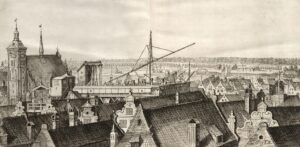
Kings at the observatory
With the money he earned from brewing beer, Hevelius created an observatory on the roofs of his three townhouses. The base was a terrace measuring approx. 14 by 7 metres, and a special wooden tower opening in all directions. The Gdańsk astronomer ground the lenses himself, constructed his own telescopes, made quadrants, octants and sextants, as well as scales. Some of the devices created by Hevelius were completely pioneering – the astronomer invented, among other items, the ‘warfinder’, a kind of prototype of the periscope used on submarines today. He wrote that ‘it can offer invaluable military services, while simultaneously allowing one to marvel at aspects of things not normally seen – inverted or seen from the side’. He presented his extensive piece of equipment to the scientific world in the publication entitled Machina coelestis (The Machine of the Sky – an Organography). It contains thirty illustrations of instruments with elaborate descriptions.
Over the following years Hevelius accumulated so many instruments in his observatory that it soon became famous as one of the best equipped in Europe. It was visited by scientists and kings – John Casimir and John III Sobieski. There were also those who tried to use Hevelius’ astronomical knowledge for astrological purposes. It is said that Christina Vasa, Queen of Sweden, and Frederick William, Elector of Brandenburg, tried hard to coax him into producing horoscopes for them. However, the scientist refused to be persuaded.
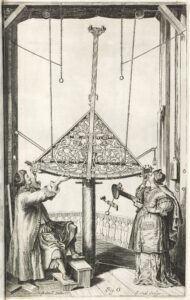
Selenites on the Moon
Hevelius made tens of thousands of observations of various celestial bodies. He studied the spots on the sun, measured the position of the planets, and the names he gave to constellations are still in use today. He published the results of his observations in over a dozen books, including the Selenographia, which included a detailed description of the surface of the Moon. ‘Although maps of the Moon had been made before, they were all representations of the Moon rather than maps of its surface. Before Hevelius, nobody had studied the Moon so thoroughly,’ Dr Jarosław Włodarczyk has emphasised. In turn, the scientist’s treatise On the libration motion of the Moon was used in the future by Newton to explain the essence of the libration phenomenon. ‘This was Newton’s first astronomical work, but he managed to write it thanks to Hevelius’ model,’ Prof. Włodarczyk has explained. Another work by the Gdańsk astronomer, Machina coelestis, became one of the most important textbooks on the universe in human history.
Hevelius also observed comets and discovered four of them. He was the first to notice that they do not move in straight lines (as Johannes Kepler tried to prove), but their paths are curved. The Gdańsk scientist also analysed the planets, devoting most attention to the phases of Mercury. His curiosity was also aroused by Saturn, whose structure he unsuccessfully attempted to unravel. To commemorate the victory of King Sobieski’s army at Vienna, Hevelius gave the newly described constellation the name Sobieski’s Shield (Scutum [Sobiescianum]).
Other constellations named by Hevelius include: The Lizard, The Fox, The Little Lion, The Hunting Dogs, The Lynx and The Sextant. These were approved by the International Astronomical Union in the 20th century and are still in use today. ‘Before the Polish astronomer, constellations created in antiquity were in use. However, they had fuzzy boundaries, and there were often stars between them that were not assigned to any constellation. Hevelius filled these holes in the sky with new constellations,’ Prof. Włodarczyk stated. Hevelius encapsulated all his observations in geometric diagrams and endless columns of digital records incomprehensible to the layman. ‘From his numerous statements, however, it is clear that the cosmos he studied appeared to him first and foremost as a magnificent, awe-inspiring, almost ecstatic, joy-inspiring baroque “spectaculum”,’ Prof. Targosz wrote. The Gdańsk astronomer advocated the heliocentric theory with a certain degree of caution – but mainly by quoting other researchers – above all Galileo and Kepler. Like many other researchers of the time, he did not rule out the existence of life in space, in particular on the Moon. He wrote about ‘creations’, which he referred to as ‘selenites’, which, according to the astronomer, were said to be ‘very different from terrestrial life forms’.
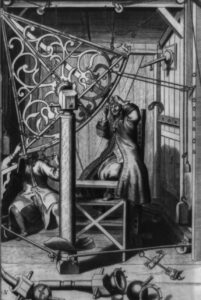
Hooke’s doubts and Halley’s confirmation
International recognition was confirmed by the acceptance of Hevelius as the first ever foreign member of the prestigious Royal Society. Shortly afterwards, he was offered the directorship of the newly built observatory in Paris, a position the scientist declined. Irrespective of his refusal, King Louis XIV of France, recognising the astronomer’s genius, paid him an annual salary for further research over eight years. It should be added, however, that part of the scientific community remained sceptical. Researchers attacked Hevelius, pointing out that the measurements of the astronomer from Gdańsk were made with ‘outdated equipment’ that could not yield precise results. Leading the attacks was Robert Hooke, one of the greatest experimentalists of the time. He reportedly felt a grudge against Hevelius, who had forgotten him when sending copies of one of his works. Hooke claimed that, with a small instrument equipped with a telescope, a more accurate result was achieved than with the large instrument without optical sights, used by the astronomer from Gdańsk. Hevelius replied that he ‘did not doubt the accuracy of his observations and that Hooke would not have been able to achieve equal results even if he had put all his telescopic viewers and all types of telescopes on his nose’. Due to doubts in the scientific world, the famous English astronomer and mathematician Edmond Halley, a member of the Royal Astronomical Society, came to Gdańsk to verify the accuracy of Hevelius’ instruments. Together, the astronomers conducted observations using different instruments and their results showed the same precision of measurements. The Gdańsk astronomer considered Halley’s visit to be one of the happiest events of his life. Inspired by Cicero, Hevelius emphasised that ‘the contemplation of the sky conceals far more pleasure and satisfaction than the cultivation of other disciplines’.
The work Hevelius was preparing before his death concerned fixed stars. In it, the scientist planned to present a new catalogue of 3,000 entries. In the end, he managed to study 1,888 items. The work was to include two large sky maps and engravings of all the constellations. Hevelius did not live to see his work published – it appeared three years after his death. In 1690, thanks to his wife Elisabeth Koopmann, a volume devoted to fixed stars was published, together with a catalogue of these, and a beautiful baroque atlas of the starry sky. The scientific legacy of John Hevelius includes approximately twenty works written in Latin and published in Gdańsk between 1647 and 1690 by the astronomer, as well as a dozen articles published in the periodicals Philosophical Transactions and Acta Eruditorum. ‘As an observer he was a pan-aesthete enthralled by the new image of the cosmos, and as a draughtsman and engraver he was able to provide unparalleled astronomical illustrations, sometimes quite novel aesthetic qualities, with an equally revealing and rigorous scientific value,’ Karolina Targosz concluded. Incidentally, it should be added that, in addition to observing the sky with personally made astronomical instruments, Hevelius particularly valued… gardening. Together with his second wife Elisabeth, he kept a small garden. The couple managed to grow lemons in it. The astronomer sent them as a gift to his patron John III Sobieski. Johannes Hevelius died on 28 January 1687. – exactly on his 76th birthday – and was buried at St Catherine’s Church in Gdańsk. Later that year two posthumous medals were minted in honour of the astronomer, and a funeral eulogy delivered by Pastor Barth was published in print in 1688.

